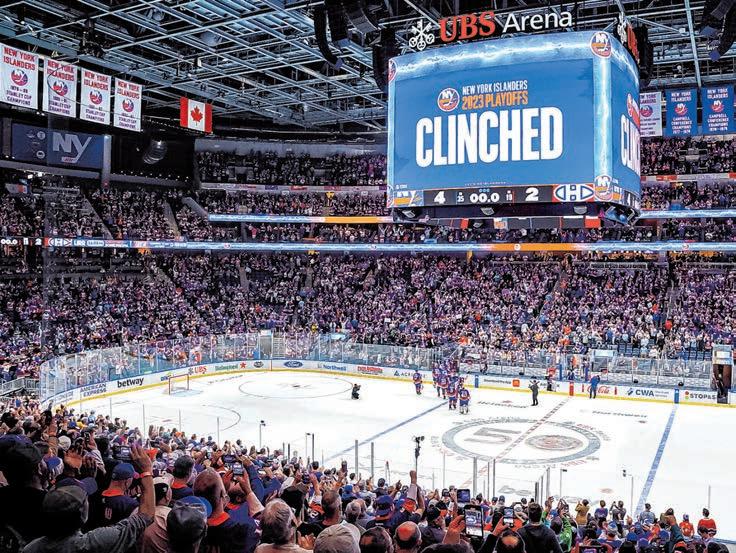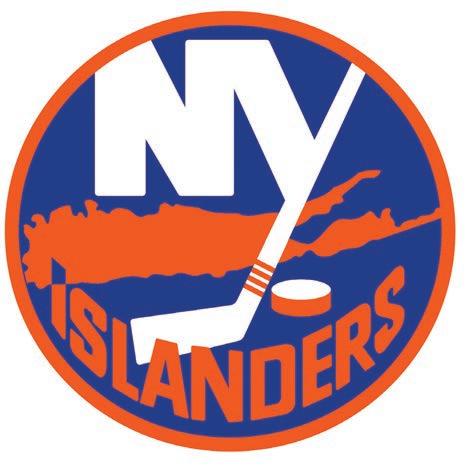
2 minute read
Nassau Dynasty: When The Islanders Ruled The NHL
Joseph Scotchie
jscotchie@antonmediagroup.com
Advertisement
Before the rise of expansion, dynasties were not uncommon in professional sports. In baseball, the New York Yankees dominated for a good 40 years, from 1927-1964. Professional football had the Green Bay Packers of Vince Lombardi, while the National Basketball Association (NBA) featured the Red Auerbach of the 1960s. Hockey’s own dynasty was that of the popular Montreal Canadians.
The New York Islanders joined the Canadians with their own stirring run. From 1979-1980 to 1982-1983, the Islanders ran off four consecutive Stanley Cup titles. Who knows when that will happen again? The title run was the culmination of a team born in the early 1970s and one that came of age later in the decade before tasting playoff glory.
Long Island made its mark on professional sports in the 1960s when the wildly popular New York Mets opened Shea Stadium. With Nassau and Suffolk counties enjoying population growth, the move to the suburbs was inevitable.
William Shea, the New York attorney who was instrumental in bringing big league ball back to New York, also played a decisive role in convincing the New York Rangers that another NHL team in the New York area would not hurt that longtime franchise. New York, after all, lived comfortably with the Yankees and Mets, the Giants and Jets and soon, the Knickerbockers and Nets.
On Nov. 8, 1971, the league awarded a Nassau County franchise of clothing manufacturer Roy Boe. The latter also owned the New York Nets, an American Basketball Association (ABA) that later won titles paced by
Hempstead legend Julius Erving. All that turned out badly when Erving, prior to the 1976 season, was sold to the Philadelphia Seventy Sixers. The Islanders, at least in the 1980s, would enjoy a happier fate.
Bill Torrey was named the team’s general manager. The pieces began to fall in place. Defense is the key to any team sports and Torrey scored with the signing of goalie Billy Smith and defensemen Bobby Nystrom and Lorne Henning.
More help was on the way. Denis Potvin would anchor the defense, while Chico Resch would spell Smith in the goalie post. Center Brian Trottier came on board in 1975. Two years later, Torrey drafted Mike Bossy, a scoring sensation who would become the most exciting player in the league.
Disappointment came in 1979 when the team had the most wins in the league, only to lose to the archrival Rangers in the semifinal round.
In the off-season, the team picked up Butch Goring from the Los Angeles Kings. That trade solidified the second line.
Stanley Cup glory
Highlights from that great run included winning overtime goals by both Nystrom and Potvin during the 1980 playoff run; Bossy’s run of 50 goals in 50 games in 1981; Bossy, in 1982, scoring 147 points in an 80-game season, one where the team won 15 straight games; and Billy Smith shutting down the great Wayne Gretzky in the 1983 playoffs.
All good things come to an end. With Gretzky and Mark Messier, the Edmonton Oilers were now poised for their own run. The Islanders never quit, playing competitive hockey while staying on Long Island.
This year, the Islanders sported a 42-31 record while earning a spot in the playoff chase. With such young stars as Brock Nelson, Mathew Bazard, and Noah Dobson, plus Illya Sorokin in the goal, the Islanders figure to give their fans many thrills in the years to come.

Miguel was previously the Director of Racquet Sports at Cherry Valley Country Club for 11 years and prior to that he was the pro at the Village Club of Sands point for 8 years. He played #1 singles at Wayne State University and was ranked #8 in the mens Open in Florida.
Miguel brings with him over 24 years of experience, developing and












